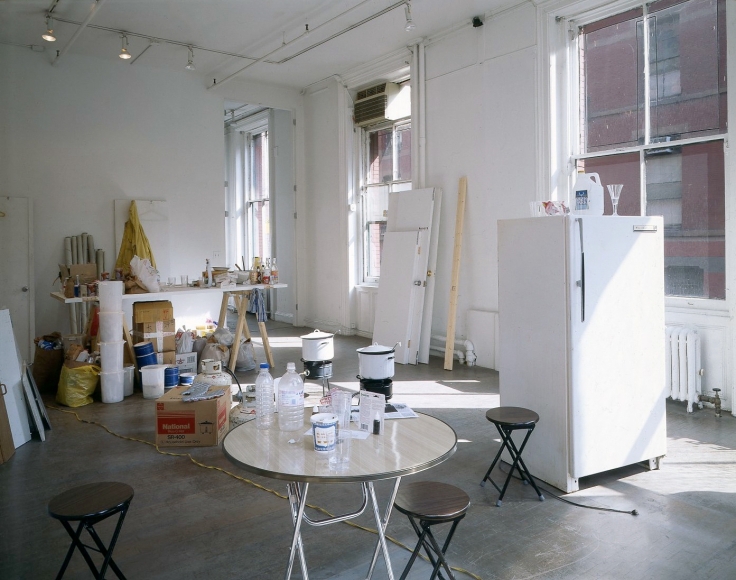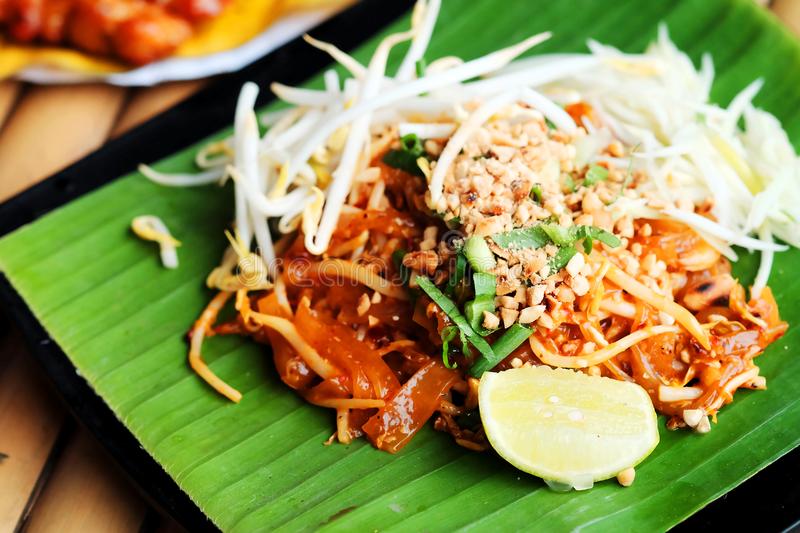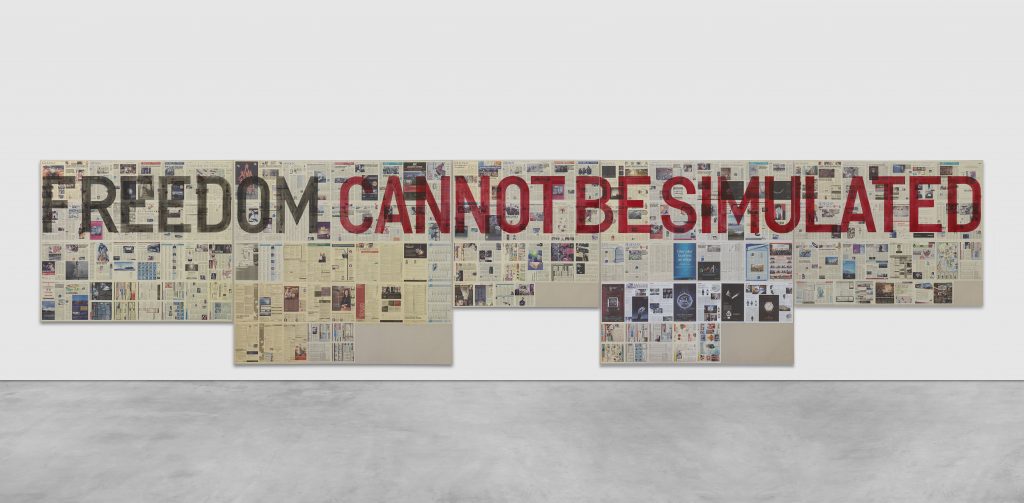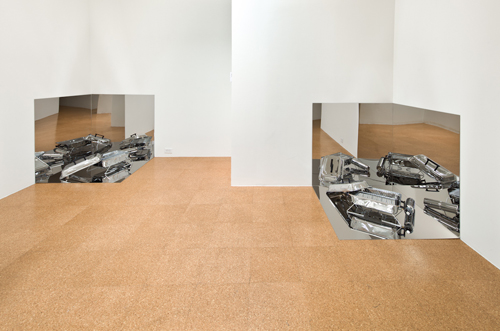Place and Time: Rirkrit Tiravanija
August 2020
Much of Modern art history is marked by manifestoes, militant supporters and competing visions of art that propelled artists to innovate and meld together different styles, mediums and ideas. However, by the 1960s, this model reached its apex and utopian hopes for a better future, the avant-garde and definable styles lost momentum as cornerstone ideas in Western art history. The conditions of globalisation dramatically altered this Modernist trajectory. Communication technologies like the mobile phone and internet, market liberalisation and the flow of travellers shaped a new set of socio-political circumstances unrecognisable to the Modernists of yesteryear. Instead, these conditions gave rise to a new generation of artists, critics and curators who employed new strategies to articulate polemical insight into the late 1980s and 1990s.

New York based, Rirkrit Tiravanija is one of the artists who defined this period. Spanning installation, video, print, painting and text, Tiravanija and his role in the Relational Aesthetics movement offered art history a new “ism”. Described by American art critic Jerry Saltz, Relational Art ‘reengineered art over the past fifteen years or so’.[1] French art critic and curator, Nicolas Bourriaud (1955—) originally coined the term in 1998 to describe and interpret the work of artists like Tiravanija, Liam Gillick and Pierre Huyghe who linked their art to politics by creating encounters where audience members could relate to each other and build potentially transformative experiences. Bourriaud used the term ‘microtopia’ — a fusion of “micro” and “utopia” — to describe these moments of social exchange.
In relational works, social exchange was the art and the artist — who had historically been stereotyped as a lone figure — was cast into the role of a gregarious mediator. Bourriaud wrote about the ‘birth of the viewer’ describing the importance of audiences in conceptualising and completing relational artworks.[2] Audiences were offered a reprieve from the draining service-based information economy which strained human relationships in the Western world. Instead, they were able to connect vis-à-vis, without the interreference of the information era.

Tiravanija’s Untitled (Free), 1992 is the gold standard of Relational Art. Staged at 303 Gallery in New York, U.S.A. the artist transferred the contents of gallery’s back of house — including the dealer and her staff — into the gallery space. The office space was then transformed into a make-shift restaurant with seating and cooking utensils where Tiravanija cooked and served curry and rice to visitors without charge. This radical intervention, or invasion, of the gallery’s sanctified serenity and reversal of spaces challenged its function in Western art. Rather than the typical acts of purchasing, contracting and schmoozing that take place at galleries, the work allowed the audience a moment of exchange unmediated by technology or capital. Tiravanijaconceived Untitled (Free) as an exercise to repair and reconstitute the personal fragmentation caused by global capital and its impulse to diminish the human spirit. He explains, ‘I am growing up in this contemporary modern structure to be fragmented, influenced, and subconsciously colonised. All the things I have been doing are about getting myself back.’[3]

It is important to note his decision to serve curries and the popular Thai noodle dish, pad thai in this work and its following permutations and reperformances. These dishes stamp his multicultural upbringing and biography onto a Western art tradition and the typical Western audiences who experienced visual art in New York at this time. He notes, ‘in the ‘80s, Thai food wasn’t something that everyone had experienced. It was still something on the edge, something exotic, perhaps; it definitely challenged your normal sense of food.”[4] Tiravanija was born in Buenos Aires in 1961 to Thai parents, raised in Thailand, Ethiopia, and Canada, before studying in Canada and the U.S.A. As a result of his globetrotting upbringing, cultural challenge has remained steadfast in his practice as he continues to champion a polyphonic interpretation and engagement with the world; recognising the individuality and difference present within it.

This ambition is also evident in The Land, 1998 a collaborative project conceived with Thai artist Kamin Lertchaiprasert. Located on the outskirts of Chiang Mai in southern Thailand, the site-specific project is contemplated as a self-sustainable environment where invited artists develop ecological art projects on the commune. Among a number of projects, Danish art group, SUPERFLEX developed a biogas system that fuelled German sculptor Tobias Rehberger’s set of gas lamps. By presenting a new model of living and societal relations, The Land extends the ideas expressed in Untitled (free) to its logical conclusion.
Tiravanija and Lertchaiprasert describe themselves as the project’s founders not owners. Each artist is responsible for funding and maintaining their project; itself an incentive to develop a contribution that furthers the overall ambition of building an autonomous commune. While the project has been criticised by Western scholars like Clare Veal for its long-term viability, as some of the projects have fallen into disrepair, the project stands as an important example of a contemporary art work in Thailand that recognises local Thai narratives while engaging with global art conversations.

These thematic issues — identity, sustainability, disengagement from capital exchange and the importance of collective environments — are threaded throughout the strands of Tiravanija’s practice. His text paintings appropriate English slogans and phrases by painting them onto large canvases of collaged newsprint. This treatment of language highlights how English can be deployed as a weapon to embed power structures and hierarchies of Western societies through news and political rhetoric. The mobilisation of athletic phrases such as, “FREEDOM CANNOT BE SIMULATED” or “DO WE DREAM UNDER THE SAME SKY” or “ASIANS MUST EAT RICE” challenge the politics of globalisation and its unequal economic, racial and political hierarchies by asking his audience to ponder these provocations.

Tiravanija is well known for chroming seemingly unremarkable everyday objects in works such as Untitled (The Future will be chrome), 2010 or Untitled (The Future Will Be Chrome), 2008. Reflecting his interest in museum culture and their normative collecting paradigms that privilege high art when shaping their historical archives, Tiravanija valorises popular, everyday objects — like BBQs, packaging or a table tennis. By chroming these objects, Tiravanija recontextualises them, reclaiming with cultural worth — commenting on society’s limited appreciation of minority cultures and histories. Implicit in this act is a questioning of what constitutes culture, who decides this, what biases affect their decision making and why is this so.
In revisiting Tiravanija’s impact on contemporary art, English art critic Clare Bishop has criticised Relational Art and Tiravanija’s practice as lacking the critical ability to reshape relations — suggesting that the comradery of his practice lies in a shallow grouping of people from a common background, as opposed to democratic exchanges punctuated by randomness and friction.[5] However, Tiravanija’s recognition of Capitalism’s failings and the power of the collective human spirit take on a prophetic and profound quality during this era of strained human relations. As the recent Black Lives Matter campaign have highlighted the racialized and discriminatory structures across America, Australia and elsewhere, status quos across the globe are buckling against the global mass protests and solidarity movements.
In speaking about the contemporary experience, Tiravanija notes “Today it’s even more important because we are living in more fear. We are afraid of more things, we are afraid of more disease, we are afraid of everything going wrong to the point that we have become paralysed. At the same time, there is an amnesia; we are forgetting what we’ve already done. We are forgetting that [Jean] Tinguely blew up a sculpture in the middle of the Museum of Modern Art. Today we couldn’t put a Coca-Cola on the marble of Philip Johnson’s garden, you know? Those are the kinds of things that are always a challenge. It’s always something to push against. The institution has to be opened up.”[6]

This demand for dialogue, human care and empathy beyond economic interests is timelier than ever. As societies look to reset and recollectivise with greater societal equality, it is necessary to refer to ideal conceptions of utopia to reimagine our futures. The task is ultimately to balance these imaginary ideals with the pragmatism of social positivity without lapsing into naïve territory. The seriousness of this endeavour is mighty and will require monumental collaboration, imagination and labour. Afterall, this is the price of justice and as Tiravanija paints, freedom cannot be simulated.
END.
This text was originally commissioned and published by VAULT.
References:
[1] Renate Dohmen, “Towards a cosmopolitan criticality: Relational aesthetics, Rirkrit Tiravanija and transnational encounters with pad thai,” Open Arts Journal 1 (2003): 35 – 46.
[2] Ibid.
[3] Liz Linden, “Alone in the Crowd: Appropriated Text and Subjectivity in the Work of Rirkrit Tiravanija,” Third Text 30, no 3-4 (2016): 159 – 172.
[4] Daniel Birnbaum and Rirkrit Tiravanija, “Rirkrit Tiravanija: Meaning Is Use” Log 34, no 1 (2015): 163-170.
[5] Claire Bishop, “Art of the Encounter: Antagonism and Relational Aesthetics,” Circa, no 114 (2005): 32 -35.
[6] Daniel Birnbaum and Rirkrit Tiravanija, “Rirkrit Tiravanija: Meaning Is Use” Log 34, no 1 (2015): 163-170.